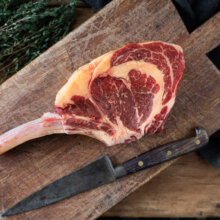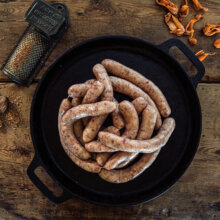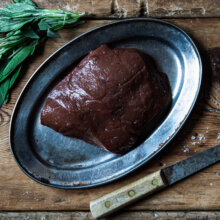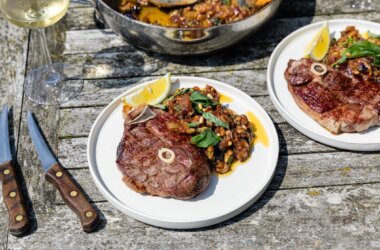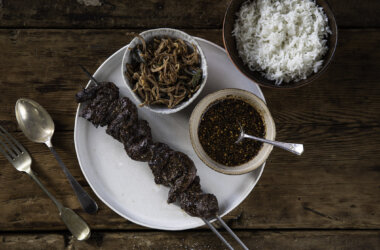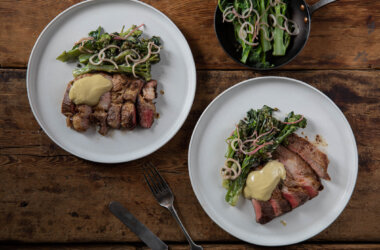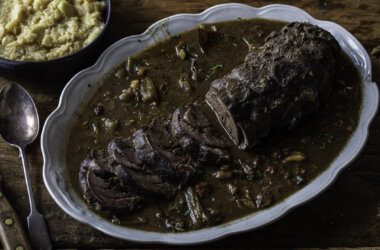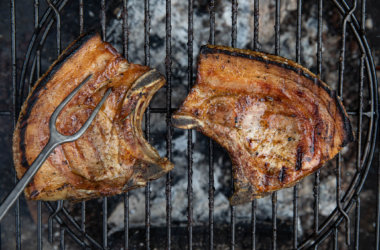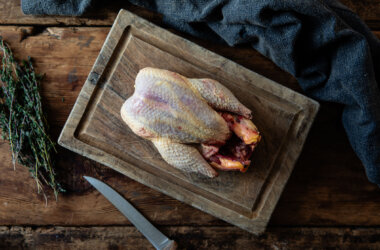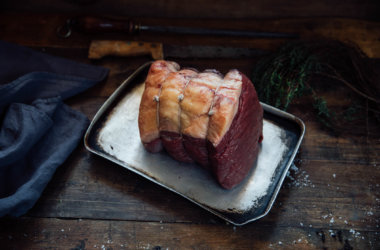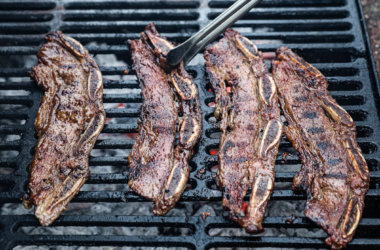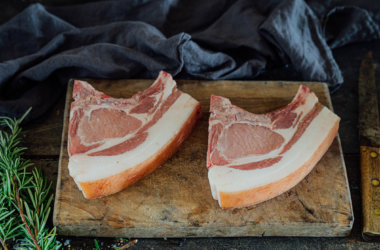
What is Bavette Steak?
How to Cook Bavette Steak: Often referred to as the “butcher’s cut”, bavette steak has a well-earned reputation for flavour. Traditionally kept back by butchers for their own enjoyment, it’s cut from the abdominal muscles at the base of the flank – one of the most exercised parts of the animal.
This gives bavette its distinctive, loose texture and deep, beefy flavour. High in fine intramuscular fat (marbling), it’s a richly satisfying cut that rewards quick cooking and proper slicing across the grain.
Bavette Steak Cooking Time
Bavette steak needs careful handling. If overcooked, it can become tough and chewy – the fine intramuscular fat (marbling) that gives it such flavour is also easily dried out. A quick, hot sear followed by a proper rest is key to unlocking its full potential.
Thickness can vary, so cooking times aren’t one-size-fits-all. Developing a feel for how a rare steak responds to touch is invaluable – see our top tips below.
For the best results, we recommend serving bavette steak rare. Cook for around 8–10 minutes in total, depending on thickness, then rest well before slicing against the grain.
The Best Way to Cook Bavette Steak
- Start by removing your bavette steak from the fridge and its vacuum packaging. Pat dry any surface moisture and allow it to come up to room temperature – this ensures even cooking.
- Heat a griddle or heavy-based frying pan until smoking hot. Just before cooking, rub a little vegetable oil over both sides of the steak and season generously with salt and pepper.
- Place the steak in the pan and sear for around 90 seconds per side. It will naturally release from the pan once a good crust has formed – if it sticks, give it a few more seconds before trying again.
- Reduce the heat slightly and continue cooking for a total of 6–8 minutes, turning the steak every 30 seconds for an even sear.
- Once cooked, remove from the pan and rest in a warm place for at least 8 minutes. This helps the juices redistribute, keeping the steak tender and flavourful.
Top Tips for Cooking Bavette Steak
To judge doneness, use the finger test – a quick, tactile way to check if your bavette steak is rare. Gently press the fleshy part of your palm below the thumb. Now touch the same spot while bringing your thumb to meet your index finger – that firmer feel is roughly what rare steak should feel like.
One of the most important tips for how to cook bavette steak well: always carve against the grain. Bavette has a pronounced, open grain that makes the direction easy to spot. Slicing across it shortens the muscle fibres, making each bite more tender.
More bavette steak tips:
-
Don’t skip the rest. A solid 8–10 minutes in a warm place after cooking allows juices to redistribute, keeping the meat juicy and tender.
-
Use high heat to get a proper crust, then reduce slightly to finish cooking without drying out the meat.
-
A meat thermometer can help – aim for around 50–52°C (122–125°F) for rare before resting.
-
Slice thinly, especially when serving on sharing platters or in steak salads – bavette’s bold flavour goes a long way.
Bavette Steak: Recipe & Serving Ideas
Bavette has the depth and character to stand up to bold accompaniments. Try topping your steaks with a slice of Roquefort butter or serving them with a thick, garlicky sauce like Henry Harris’ aïoli recipe. For something spicier, Sebby Holme’s Crying Tiger Steak brings heat, herbs and real vibrancy to the table.
Triple-cooked chips are a natural match – and if you’re after something sharper to cut through the richness, George Ryle’s béarnaise sauce is a fine choice. Or try our guide on how to make wild garlic mayo – punchy, vibrant, and just the thing with whole-carcass artisan steaks, roast veg or triple-cooked chips.
